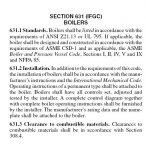kwired
Electron manager
- Location
- NE Nebraska
- Occupation
- EC
What about boilers? I think the requirements are for an emergency stop to shut down the controls because of the risks we have from a pressurized vessel, they don't care what the fuel source is.You're in Massachusetts? Come on, you know the wiring inspector can request it, but he can't require it :happyno:
And while I can't cite a code reference, my understanding about the fire code in this state is that any oil-burner requires a safety shutoff switch in a different room from the burner, so in a typical single-family that would be top of the cellar stairs facing into the finished living space. And it is not a requirement for gas burners.


